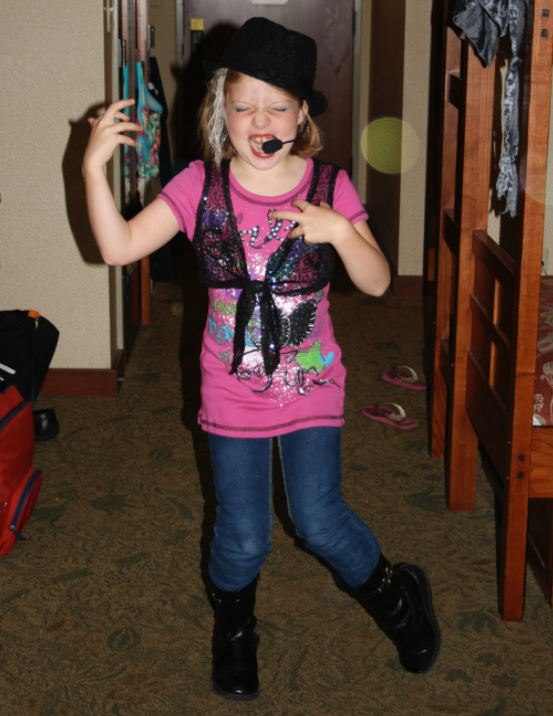Mourning the Justice Phase: Reflections on Childhood Fashion
When asked to summarize her childhood style, Cassidy Yoneda ‘22 put it simply: “the worst outfits you’ve ever seen.” Her peers echoed the sentiment. Their go-to styles included sequins, Disney-Channel-inspired layering, and, as Ellie Chang ‘22 put it, “the iconic plaid shorts.” For a generation whose adolescence tragically coincided with Shake-It-Up’s air time, it’s no wonder our collective style leaned colorful, multi-patterned, and lovably obnoxious.
However, one answer far eclipsed the rest. Justice, a tween clothing brand popular in the 2000s and early 2010s, was known for its jeggings, sparkly slogan tees, and virtual monopoly on my young generation’s trend cycle. When the last Justice stores shuttered their doors in December 2020, it truly felt like the end of a tween-fashion era.
When comparing their childhood outfits to today’s kids’ fashion choices, “There’s a huge difference,” says Yoneda. She notes that their style seems much less childish than prior generations, instead inching closer and closer to that of older teens and adults. This change threatens to kill the tradition of awkward tween fashion. In place of Justice, kids “all shop at Brandy [Melville] and Urban [Outfitters] now,” says Chang. “Like, where’s your awkward stage?” Yoneda agrees. Today’s kids “never had a cringey era…I mourn that,” she says, laughing. “Now thrifting is really big, and you might find a Justice shirt at a thrift shop.”
Chang speculates that social media’s increased presence is largely to blame. She points to TikTok in particular, because “It’s really accessible and addicting,” she says. “It’s easy to recreate what you see.” As kids venture onto the internet at a younger and younger age, this pattern will likely continue to grow. Kate Hanson ‘22 worries that too much online inspiration could counteract the natural creativity of kids’ style, which she experienced while growing up without social media. Now, “They don’t get to explore themselves and their own sense of style. They just want to fit in,” she says. Miranda Beard ‘22 points out that social media exposure could create a pressure for young children to grow up too fast. “They’re holding themselves to the same standards we do today,” she says. “That’s gotta be really detrimental to their mental health at such a young age.”
Chang says that no matter how awkward her childhood fashion may have been, she wouldn’t want to change a thing. “I enjoy making fun of my outfits now,” she says. “It’s just part of growing up. It’s a rite of passage.” With a little time, our collective embarrassment fades into nostalgia. While Yoneda is jealous of today’s kids' tasteful outfits, she misses the spontaneity of her younger style. “I was just having fun,” she says. In the end, isn’t that what childhood fashion is all about?
Pictured: a young Miranda Beard ‘22

